
Comparing the Top Delivery Management Systems in 2025
In 2025, businesses increasingly rely on delivery management systems to streamline logistics, optimize routes, and enhance customer satisfaction. A robust delivery management system ensures timely deliveries, cost efficiency, and real-time tracking. Here, we compare the best delivery management systems, analyzing their features, advantages, and drawbacks to help businesses choose the right delivery management solution.
1. LogiNext Solutions
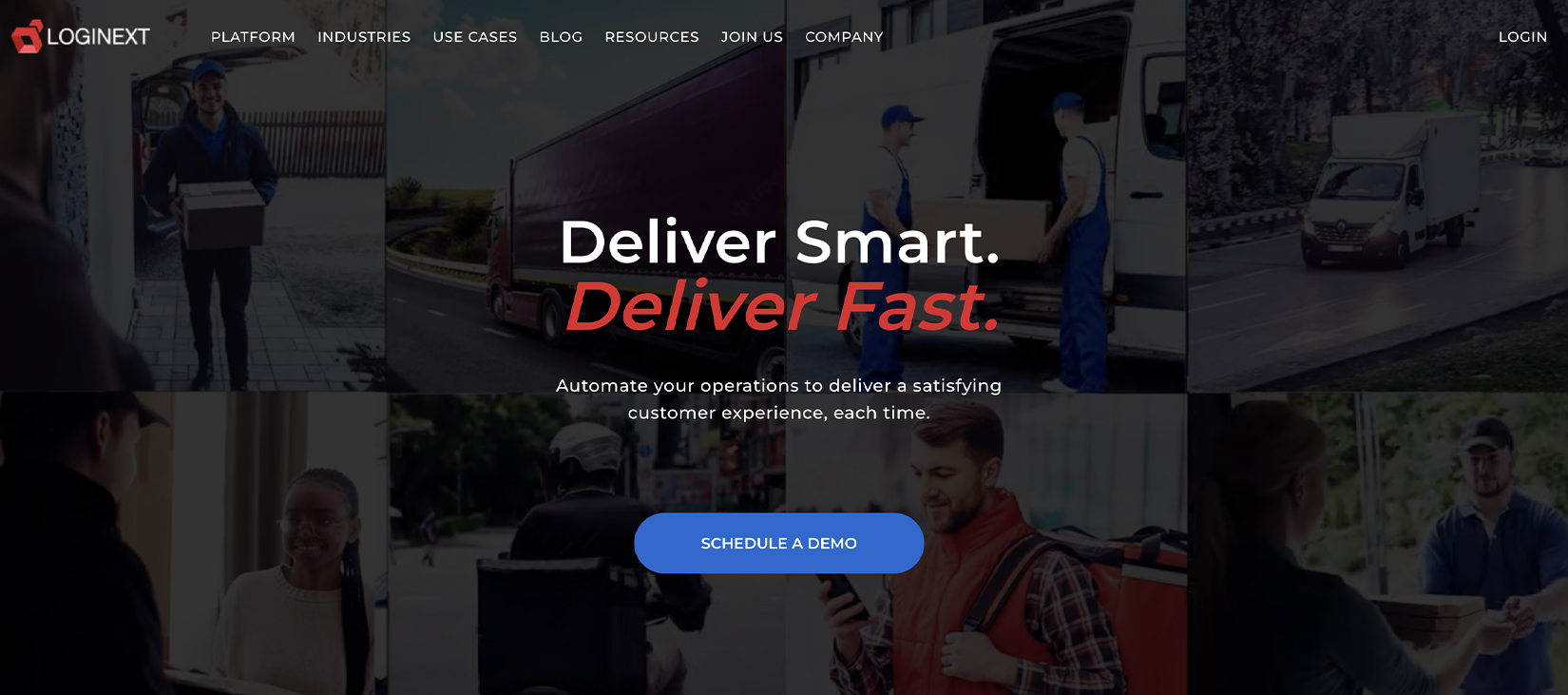
LogiNext Solutions is a leading delivery management system provider known for its AI-driven logistics optimization. It helps businesses improve delivery efficiency, reduce costs, and enhance tracking accuracy. This solution is widely used across e-commerce, retail, and logistics sectors.
Key Features:
– AI-Powered Route Optimization: Enhances delivery efficiency by reducing travel time and fuel costs.
– Real-Time Tracking and Analytics: Provides live updates on delivery status and performance.
– Integration with Multiple Platforms: Seamlessly connects with existing business software and ERP systems.
– Automated Dispatch and Scheduling: Ensures efficient task allocation to drivers.
– Driver Behavior Analysis: Monitors and improves driver performance for safer deliveries.
Advantages:
– Cost Reduction: Lowers delivery costs by up to 20% through route optimization.
– Predictive Analytics: Helps businesses forecast demand and allocate resources efficiently.
– Scalability: Suitable for businesses of all sizes, from startups to large enterprises.
– Mobile-Friendly Interface: Allows real-time access and tracking on mobile devices.
2. OnFleet
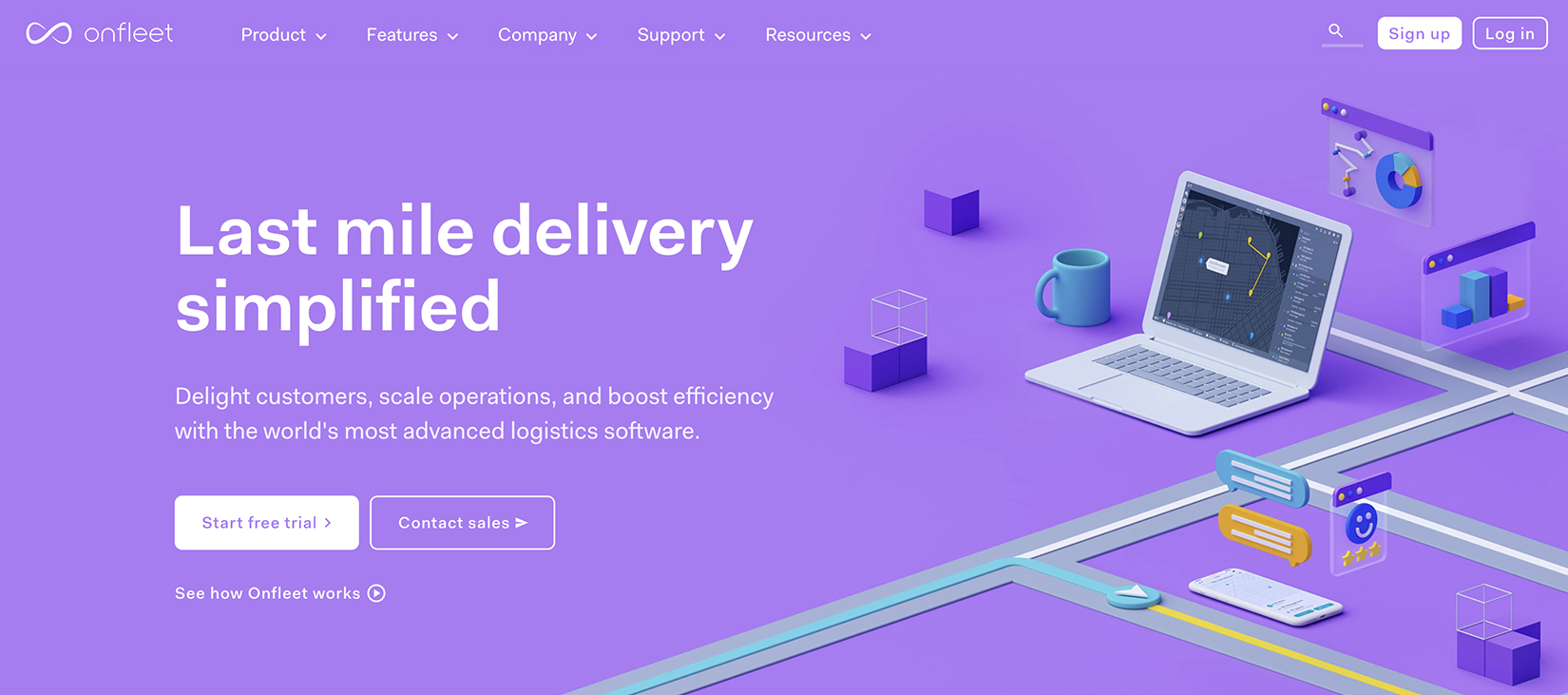
OnFleet is a highly intuitive delivery management system designed for businesses that prioritize customer experience. It offers robust route optimization, real-time tracking, and automated notifications, making it a preferred choice for courier, grocery, and retail deliveries.
Key Features:
– Advanced Route Optimization: Maximizes efficiency by selecting the fastest routes.
– Customer SMS Notifications: Provides updates on delivery status and ETAs.
– Proof of Delivery: Captures signatures and photos for verification.
– API Integration: Connects seamlessly with third-party applications.
– Real-Time Fleet Tracking: Monitors driver locations and performance in real time.
Advantages:
– User-Friendly Interface: Simple and intuitive for easy operation.
– High Customer Satisfaction: ETA notifications improve customer experience.
– Detailed Performance Analytics: Provides insights into delivery efficiency.
– Seamless Third-Party Integration: Easily integrates with existing systems.
Disadvantages:
– Expensive for Small Businesses: Pricing may not be suitable for startups.
– Limited Basic Plan Features: Some key features are only available in higher-priced plans.
– Occasional System Lags: Users report occasional slowdowns in performance.
3. FarEye
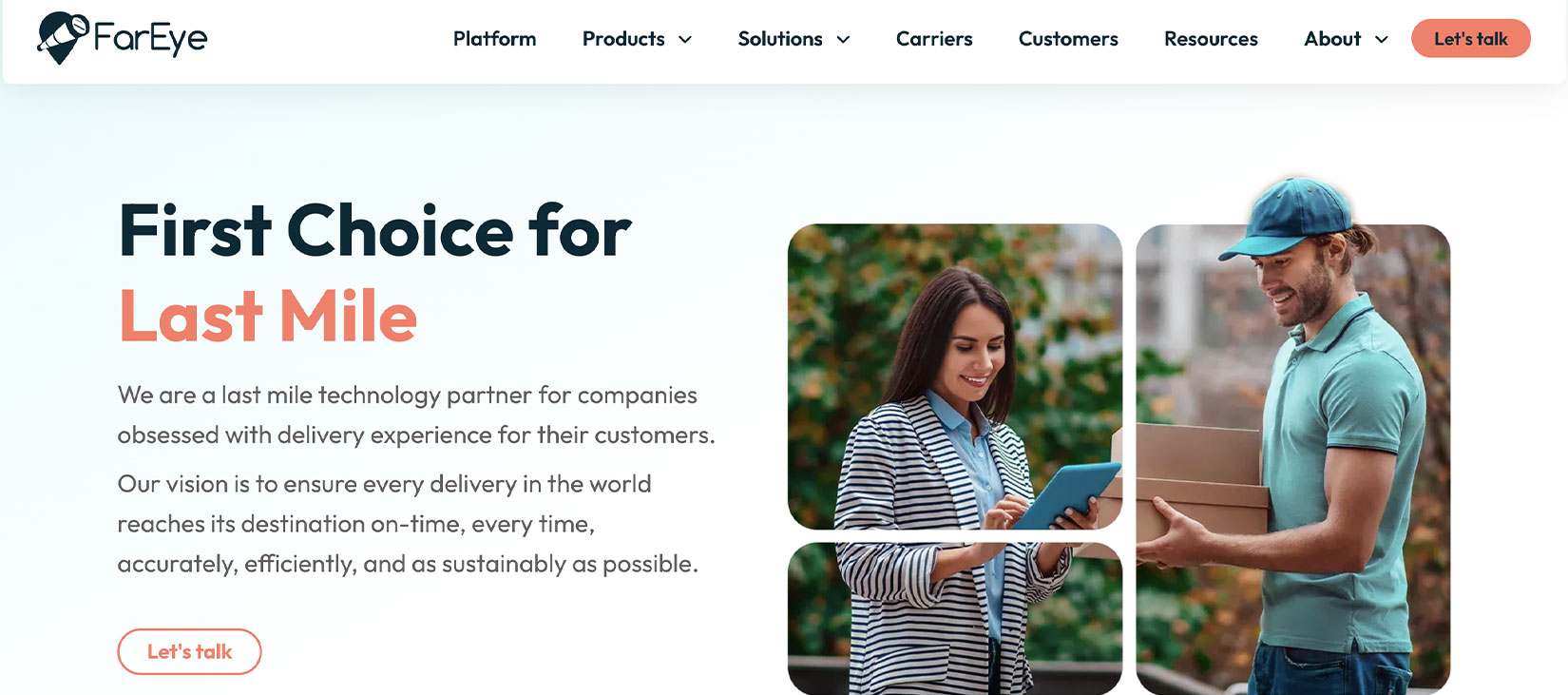
FarEye is an intelligent delivery management system designed to optimize last-mile delivery operations. With AI-powered predictive analytics, businesses can improve delivery speed, track exceptions, and enhance efficiency across supply chain operations.
Key Features:
– AI-Driven Predictive Visibility: Helps businesses anticipate delivery delays.
– Dynamic Routing and Scheduling: Adjusts routes in real time based on traffic and weather conditions.
– Contactless Delivery Support: Ensures safe and secure deliveries.
– Real-Time Exception Management: Identifies and resolves delivery issues immediately.
– Cloud-Based Architecture: Offers easy scalability and accessibility.
Advantages:
– Faster Deliveries: Reduces delivery time by up to 25%.
– Efficient Last-Mile Delivery: Optimizes the final step of the delivery process.
– Sustainability Initiatives: Helps reduce carbon footprint with optimized routing.
– Data-Driven Decision Making: Offers comprehensive insights for logistics planning.
Disadvantages:
– Customization Required: Businesses may need to tailor features to their needs.
– Steep Learning Curve: Requires training for new users.
– Non-Transparent Pricing: Pricing information is not readily available.
4. Tookan
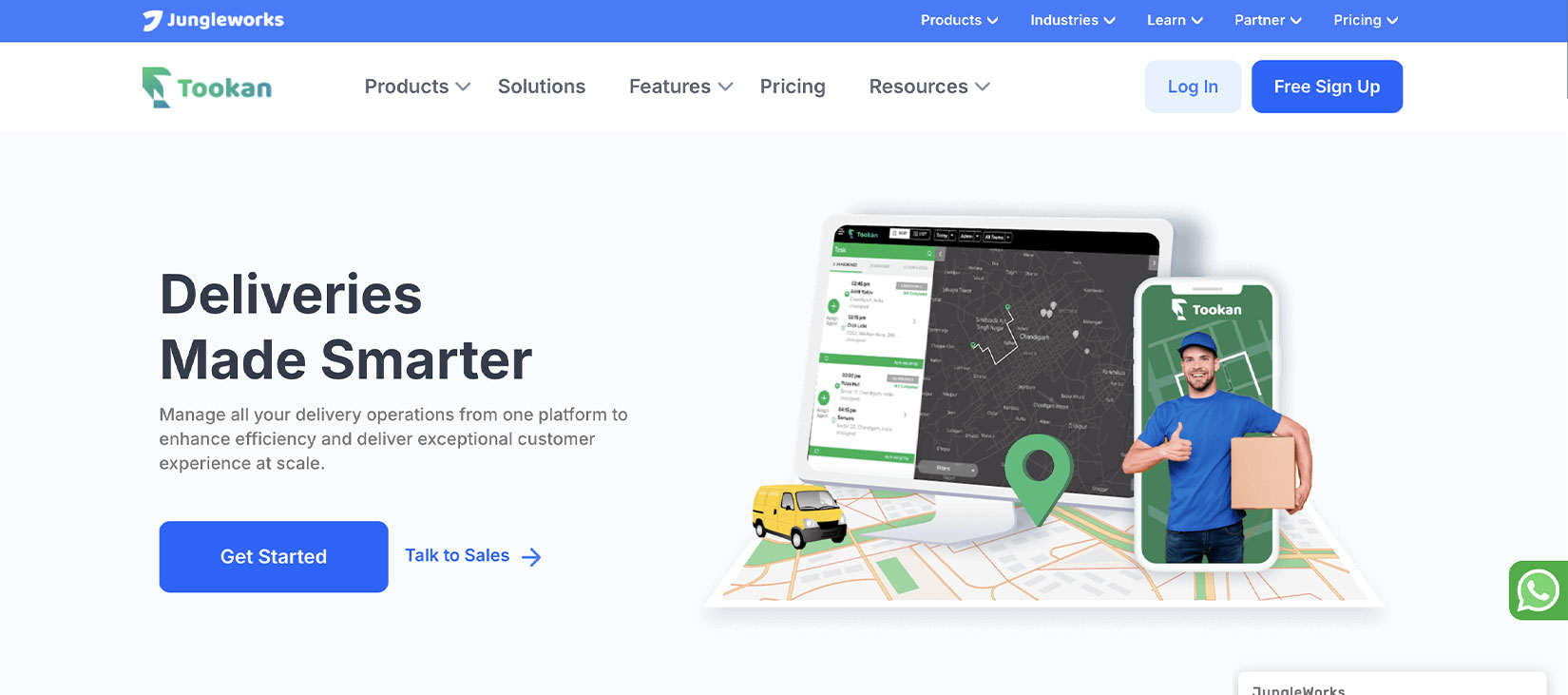
Tookan is a flexible and cost-effective delivery management software designed for small and medium-sized businesses. It provides essential tools for task automation, tracking, and customer communication, making it ideal for food delivery, e-commerce, and courier services.
Key Features:
– Automated Task Allocation: Assigns delivery tasks to drivers efficiently.
– Real-Time Delivery Tracking: Provides live updates on shipment progress.
– White-Labeling Options: Allows businesses to customize branding.
– Multiple Payment Gateway Integration: Supports secure payment processing.
– Customer Feedback Management: Enables businesses to collect and analyze customer feedback.
Advantages:
– Budget-Friendly: Cost-effective solution for small and medium businesses.
– Customizable Features: Adaptable to various business needs.
– User-Friendly Dashboard: Easy to navigate and operate.
– Supports On-Demand Deliveries: Ideal for businesses offering same-day delivery.
Disadvantages:
– Limited Scalability: May not be suitable for large enterprises.
– Technical Glitches: Some users report occasional system bugs.
– Basic Analytics: Lacks advanced analytical tools compared to competitors.
5. GroundCloud
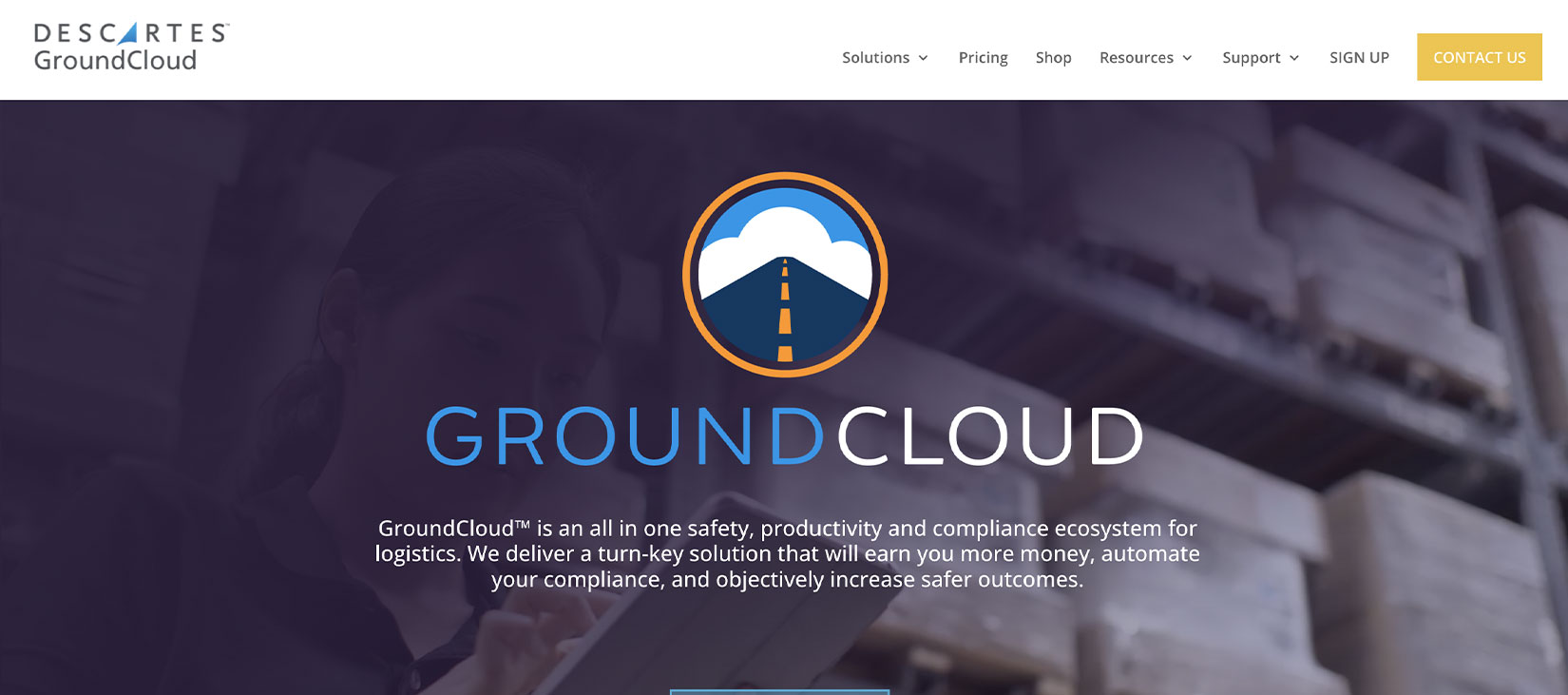
GroundCloud is a compliance-focused delivery management system designed for businesses that require strict adherence to safety regulations. It integrates safety training, route optimization, and compliance tracking, making it suitable for logistics and transportation firms.
Key Features:
– Compliance-Focused Delivery Management: Ensures regulatory adherence.
– Safety and Training Modules: Provides driver training and safety compliance tracking.
– Route Optimization and Real-Time Tracking: Helps businesses manage deliveries efficiently.
– Automated Workflows: Streamlines logistics operations.
– Performance Analytics Dashboard: Monitors overall delivery efficiency.
Advantages:
– Strong Compliance Features: Ideal for businesses with strict regulatory requirements.
– Enhanced Driver Safety: Provides necessary training to drivers.
– Cost Reduction: Helps minimize operational expenses.
– Cloud-Based System: Ensures easy access and data security.
Disadvantages:
– Limited International Support: Not widely available outside specific regions.
– Steep Learning Curve: Requires time to master all features.
– Less Flexibility for Small Businesses: Primarily designed for large logistics firms.
Also Read: The Evolution of Delivery Management: From Manual to Automated Systems
Conclusion
Selecting the right delivery management software in 2025 depends on factors such as business size, budget, and operational requirements. Companies must assess features like route optimization, real-time tracking, automation, and scalability to ensure seamless logistics. A well-chosen system enhances efficiency, reduces costs, and improves customer satisfaction. Careful evaluation of available options allows businesses to implement a robust, cost-effective logistics strategy tailored to their specific needs and future growth. So click on the red button below and book a demo with LogiNext Solutions. By doing this, you are not just securing your present but your future too.
27







@LogiNext